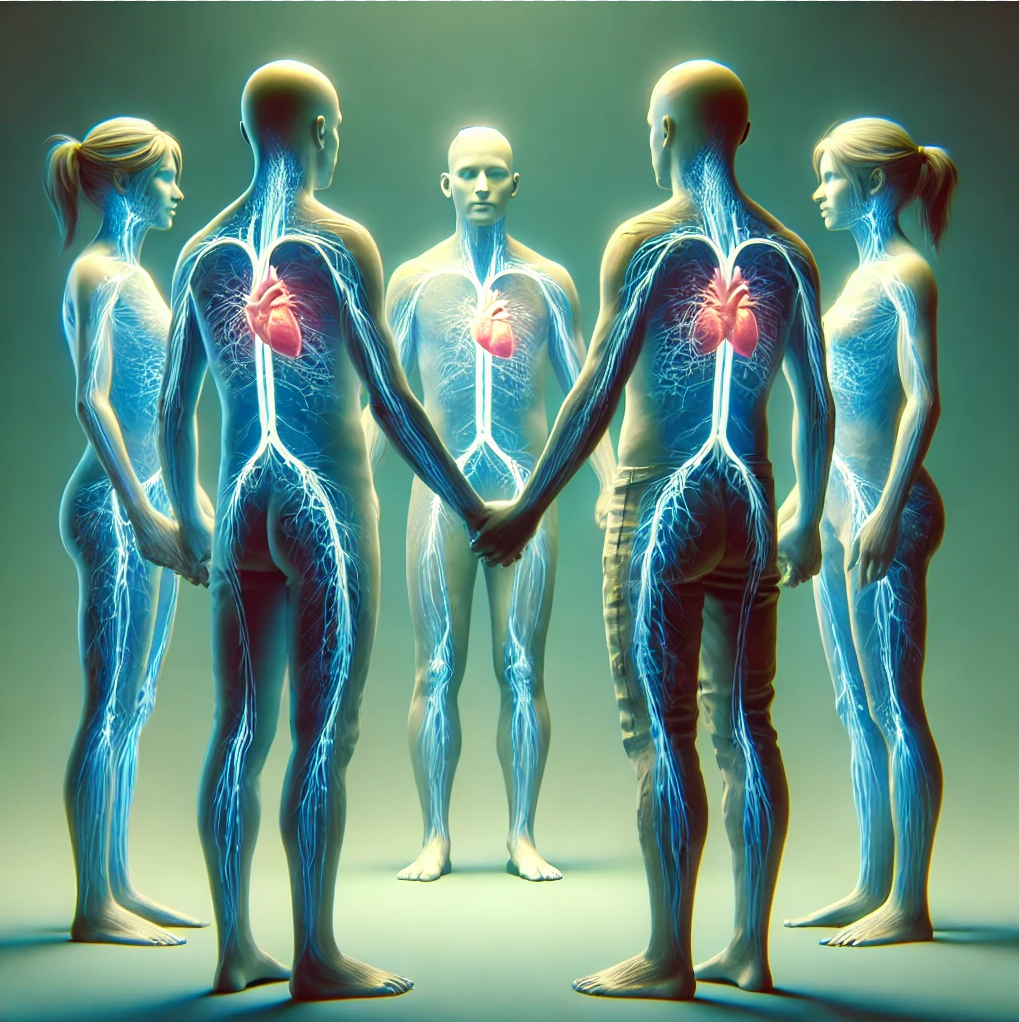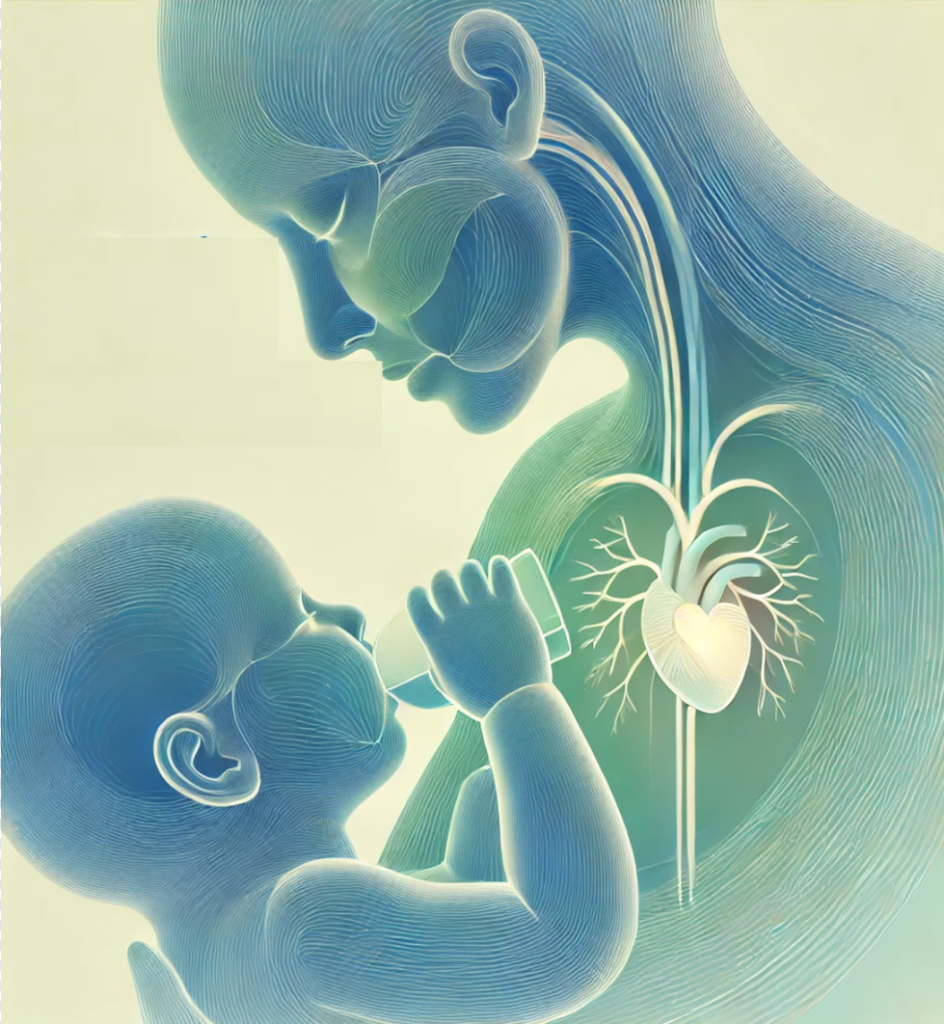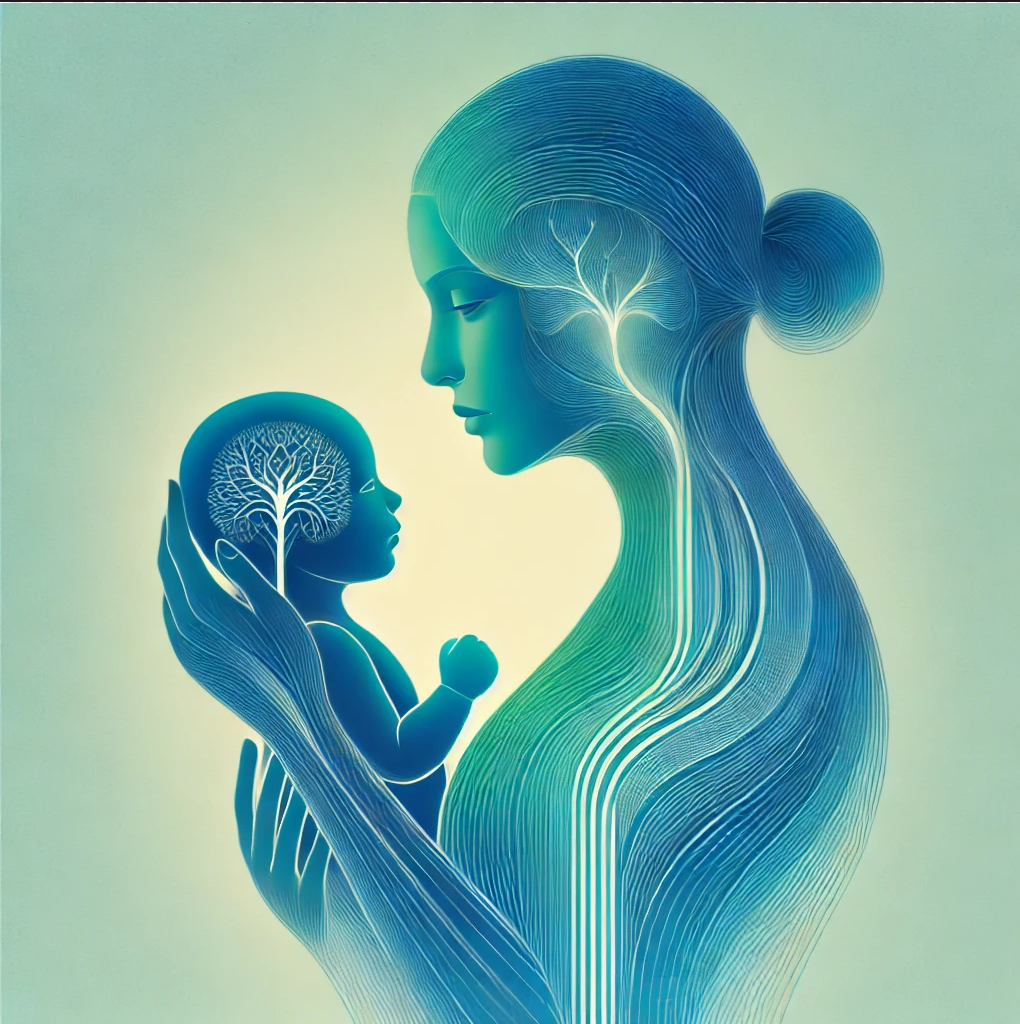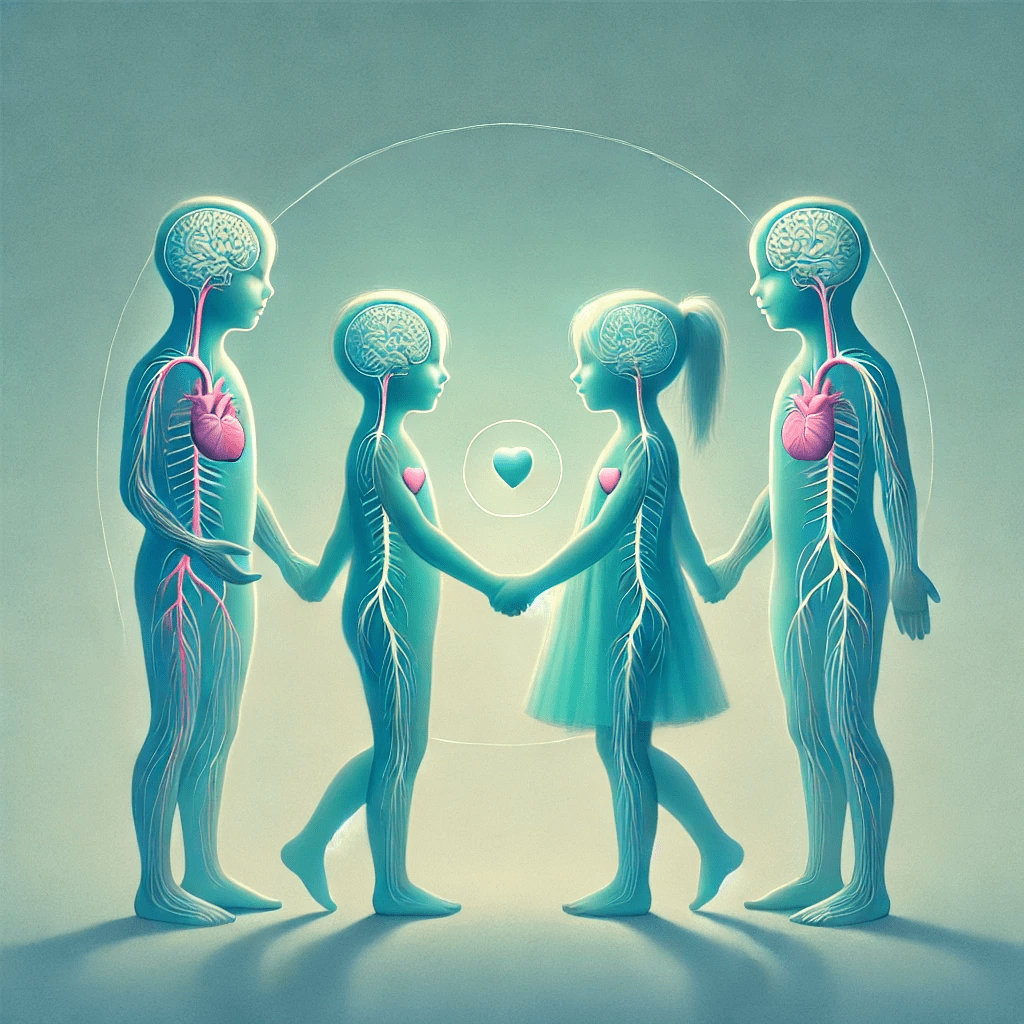Safety, Connection and Regulation
What is Psychological Safety in our current world
Our world is often described as VUCA (Volatile, Uncertain, Complex, Ambiguous) or BANI (Brittle, Anxious, Nonlinear, Incomprehensible). Prolonged stress and trauma are increasingly common, leading to Post-Traumatic Stress Disorder (PTSD) and its chronic version, Complex PTSD (C-PTSD), both of which have now been recognised and included in the World Health Organization’s International Classification of Diseases (ICD-11, 2022).
PTSD, recognised in the DSM-III since 1980, results from acute, single-event trauma such as accidents or natural disasters. C-PTSD, a recent addition included in the ICD-11 (2022), arises from prolonged, multiple episodes of relational and emotional stress, often involving betrayal of trust within familial, societal, and professional environments.
This distinction is crucial, as C-PTSD—caused by the chronic stress of modern life—has become the “disorder” of our time, manifesting in many chronic relational, psychological, and physical conditions/symptoms. It affects a growing portion of the population, making them unable to experience their world as psychologically safe and realise their potential.
Whilst we cannot escape our VUCA/BANI world, by supporting our nervous system regulation, we can experience our immediate environment as “psychologically safe.” Psychological safety refers to our sense of inclusion and ability to speak up, contribute, and challenge within our social, work, and other groups. It influences our Ontology (who we are), our connection to our soul values, performance, possibilities, physical and mental health, and well-being.
Phylogeny, Ontogeny & Ontology – Paradigm Shift
Since 1994, Stephen Porges’s Polyvagal Theory (PVT) has provided a paradigm shift in our understanding of our unified nervous system and its vital role in regulating our physical and psychological health. It provides the framework to regulate and manage chronic relational, psychological, and physical conditions rather than treating them as acute illnesses. This shift is vital in our VUCA world, where chronic conditions and C-PTSD are now becoming the norm.
Polyvagal Theory (PVT) describes the peripheral and central nervous systems as holistic and provides a new evolutionary blueprint for their unified functioning. This unified polyvagal nervous system regulates our physiology and influences our Ontology (who we are) in our psychology, behavioural responses, and experience of psychological safety. It ensures survival through protective reactive regulation and enables us to thrive through connection regulation with ourselves, our soul, others, and our environment.
Thus, PVT describes a phylogenetically evolved thriving nervous system that allows connection-regulated responses to promote social living and protective reactions to threats to ensure our survival. Neuroception, our subconscious evaluation of sensory information for safety is pivotal to its functioning.
The ontogeny of our nervous systems unfolds against this evolved phylogenetic framework. At any moment, our ontology (who we are) expresses how our ontogenic history influences our way of doing, being, becoming, belonging, and experiencing psychological safety.
At Neuroceptive Learning, we combine this PVT blueprint with various disciplines to form a framework for how our nervous system’s functioning is foundational to our humanness. We use this framework to normalise the effects of our Ontogeny (our embedded history) on its regulation and our present Ontology: “who we are,” our connection to our soul values, and our experience of psychological safety in our VUCA/BANI world.


The following are critical elements of our Polyvagal-informed approaches to normalise our clients’ nervous system’s functioning as a foundation for their Ontology and the realisation of their potential:
Polyvagal Theory – Bottom-Up: Senses First
The Polyvagal Theory challenges the Western ethos of “I think. Therefore I am” by emphasising the bottom-up development of our nervous system: “I sense, evaluate for safety (neuroception), regulate, and then I think.”
Our nervous system functions from the bottom up: from the body to the brain and within the brain, from the subconscious (brainstem) to the conscious cognition (thinking prefrontal cortex).
PVT highlights the importance of the “sensory-motor” component of our unified nervous system, with our spinal nerves and cranial nerves transporting afferent (sensory) and efferent (motor) information to and from our brains. It shows the critical role of our internal interoception, proprioception, and vestibular senses, along with our five senses of hearing, vision, touch, smell, and taste, in embedding and conveying ontogeny (our unique history and genetics) in our unified nervous system. Furthermore, 80% of the vagus nerve (cranial nerve X) fibres are sensory (from the body to the brain). Only 20% are motor (from the brain to the body), indicating the importance of sensory integration and processing alongside cognition. As expressed by occupational neuroscientist Jean Ayres’s two essential principles: “the brain is a self-organising system” and “intersensory integration is foundational to function.”
Between sensory processing and cognition, neuroception occurs, subconsciously evaluating sensory information. Neuroception influences whether our nervous system regulates our health with access to higher cortical input and thus our ontology: who we are in our doing, being, becoming, belonging, connection to our soul values, and our experience of psychological safety in the world, and whether we realise our potential.
Neuroception influences whether our nervous system responds with connection responses with input from our cognition promoting health and well-being or protection reactions, with limited input from our cognition prioritising survival but compromising our health and well-being. PVT refers to the connection response circuits as Social Engagement, Participation, and Rejuvenation, whilst the protective reactive circuits are Fight, Flight, Freeze, and in-between states of Appease and Fawn.
A robust, well-developed nervous system mainly has a neuroception evaluation of safe and regulated connection responses. Only in real danger should neuroception be unsafe with protection reactions, returning to safe and connection responses once the danger has passed. However, if our neuroception becomes compromised and biases towards unsafe evaluation and prolonged protective reactions, it will ultimately struggle to move back to connection-regulated responses. This is when our nervous system becomes dysregulated. A dysregulated nervous system leads to similar symptoms and chronic conditions experienced by C-PTSD and PTSD and prevents us from realising our potential.
Neuroception Unlocks Our Nervous System and Our Human Potential
We all receive the same sensory input, but our responses depend on our neuroception evaluation.
Our neuroception is shaped by our embodied ontogeny and conveyed via afferent and efferent neuro-pathways, mainly to the brainstem for sensory processing. Our ontogeny is also embedded and influences the functioning of our neuro-building blocks of gravitational security, face-heart connection, vagal brake, and Face-Heart-Gut, all forming building blocks of our neuroception.
Gravitational security, introduced by Dr. Jean Ayres, refers to our ongoing sense of safety and stability within the gravitational field. This is a function of the fully myelinated vestibulocochlear nerve (cranial nerve VIII), which, as part of our vestibular system, forms our vestibular sense. In conjunction with our proprioceptive sense, it integrates our senses and early movement patterns (reflexes), promoting the formation of synapses in higher cortical areas of our brain.
It facilitates our first neuroplasticity learning, ongoing posture alignment, movement, motor skills, future learning, emotional control, and executive functioning. It plays a crucial role along the spinal nerves in facilitating the “fight and flight” sympathetic mobilisation circuits of our Autonomic Nervous System (ANS) in regulating our physical health.
The pioneering work of Dr. Jeremy Schmahmann also indicates that dysfunction of the vestibular-cerebellum can cause us to lose not only our physical balance but also our emotional equilibrium, our ability to learn new skills, regulate emotion, and sustain focus.
The face-heart connection, introduced by Dr Stephen Porges, and facilitated by the myelinated ventral vagal nerve (cranial nerve X), is vital for fostering trust, bonding, and regulated connection responses that promote co-regulation and social engagement.
The face-heart-gut connection further integrates sensory information via the unmyelinated dorsal vagal pathways, which regulate digestion and provide the Freeze protective reactive regulation of our ANS. At birth, the complex process of sucking, swallowing, and breathing required for feeding is coordinated by the striated muscles of the ventral vagal complex (cranial nerves V, VII, IX, XI), linked to the gut through these dorsal pathways. This also promotes the formation of synapses in higher cortical areas in the brain and furthers the myelination process of ventral pathways. This enhances the synchronisation of the bronchi and heart, strengthening our social engagement system as the face-heart connection becomes fully functional.
Vagal Brake: PVT explains that only the mammalian nervous system has evolved to have a myelinated ventral vagus branch, allowing us to live closely together in groups. For us to be able to be close to each other, we need to trust each other, and a key part of our social engagement system is our Vagal Brake. The “vagal brake” dampens the autonomic nervous system’s protective reactions of fight, flight, and freeze, and instead promotes connection-regulated responses of participation, rejuvenation, and deep relaxation. This enables trust and sociability.
However, it can only do so if our neuroception evaluates the situation as safe.
Neuroception: Bonding with the primary caregiver, supported by the gravitational security of the myelinated vestibular system, provides the newborn with crucial initial foundational safety to further facilitate the development of the social engagement building blocks: face-heart connection, vagal brake, and neuroception maturing their nervous system. A well-developed neuroception is pivotal for our nervous system’s ongoing regulation and functioning.


Adverse Childhood Experiences (ACEs) & C-PTSD – Our Ontogenic History
Adverse Childhood Experiences (ACEs) and developmental trauma are a subset of C-PTSD and lead to the development of subconscious survival adaptation strategies. While these adaptations are essential for coping during childhood, they can significantly impact our physical health and influence our ontology (way of being), including our connection with our soul values, behaviour, relationships, and happiness, hindering potential and success in later life.
Sigmund Freud called these survival adaptations our ego structures and saw them as disorders of the mind, which he addressed with top-down psychoanalytic therapy.
Psychosynthesis, a transpersonal psychology developed by Roberto Assagioli, expands on traditional psychoanalysis by incorporating our will and soul/spirit as integral parts of our being alongside our body, emotions, and mind. He refers to our survival adaptations as subpersonalities, and our will (motivation) is either driven by the fears of our subpersonalities or motivated by the connection through our soul and soul values to a universal consciousness. This connection enables us to realise our full potential.
Wilhelm Reich, a student of Freud, identified these adaptive patterns as embodied in our posture, calling them character styles and treating them with bodywork. Modern somatic therapies have evolved into more awareness-based energetic neuro-somatic bodywork therapies, as explained by Steven Kessler in The Five Personality Types.
Polyvagal Theory (PVT) explains how ACEs are not only embodied but embedded in our nervous system, severely impacting its maturation, development, and functioning.
At birth, an infant’s autonomic nervous system (ANS) function is immature, with only the protective responses of fight, flight, and freeze available. Due to the incomplete myelination of the ventral vagus branch (cranial nerve X), neuroception and connection regulation responses are underdeveloped. The bonding from primary caregivers, supported by the fully myelinated vestibular system, provides the safety to facilitate the myelination process of the ventral vagus nerves, enabling neuroception and future co-regulation with others, learning self-regulation, and social engagement.
These very important early neurodevelopmental processes allow the maturation of neuroception and connection responses, enabling the full spectrum of nervous system regulation and executive functioning. This also enables the maturity of the Face-Heart connection, Vagal Brake, Gravitational security, and Face-Heart-Gut.
ACEs experienced during this very crucial time could hinder neurodevelopmental processes and leave us with compromised neuroception and autonomic nervous system (ANS) regulation, prone to reactive protective regulation and our Ontology (who we are) influenced by adaptive survival styles rather than our soul values. Therefore prone to dysregulation.
Chronic stress and complex trauma events, leading to C-PTSD in our teenage years and adulthood, could also cause a previously well-developed nervous system to become unintegrated, with compromised neuroception and ANS regulation prone to protective reactions, with behavioural responses locked into adaptive survival styles and eventually dysregulated.
A dysregulated nervous system malfunctions at a regressed survival level with limited access to the phylogenetically evolved thriving level of safety, connection, and regulation. Its symptoms are similar to many of the conditions caused by C-PTSD, and osteopath James Jealous stated, “80% of chronic physical and psychological conditions stem from nervous system dysregulation.”
As Dr. Bessel van der Kolk eloquently states, much of what we consider “disorders” **is** more accurately seen as breakdowns in relationships and social structures.
The PVT describes a nervous system that phylogenetically evolved to allow exactly this that is now broken in our stressful VUCA world—societal living, trust, co-regulation with others.
Therefore at Neuroceptive Learning, instead of treating chronic stress conditions as “disorders”, we provide services focusing on regulation alongside traditional treatment options.
Thus, by normalising the nervous system to function at its phylogenetically evolved thriving level rather than at a regressed survival level, we strengthen the key elements of safety, connection, and regulation, allowing trust, co-regulation, societal interaction, fulfilment of potential, and psychological safety.


Change Through Intention and Awareness
At Neuroceptive Learning, we acknowledge that change and learning occur through intention/goal-setting and awareness of our present ontology – who am I.
Arnold Beisser’s Paradoxical Theory of Change encapsulates this: “Change occurs when we become who we are in the here and now.”
Conscious awareness of “who we are” in our “doing, being, becoming, and belonging” and my experience of psychological safety in feeling included, how I speak up, contribute, and challenge in groups is crucial. Most important is how childhood adaptive survival patterns influence my adult life and hinder my true potential.
Our motivation for change is either driven by our “will” in service of our core soul values or by the fears of our adaptive survival patterns from early childhood.
Awareness of all these key elements of our ontology, aligned with our wish for change and utilising our nervous system’s natural learning capacities, is at the heart of all our approaches.
Neuroceptive Learning’s Approach – Neuroplasticity Learning and Trauma-Informed Talk
Neuroceptive Learning acknowledges the link between events leading to C-PTSD and nervous system dysregulation. Our approach does not pathologise or label but normalises and optimises nervous system regulation, co-regulation, and self-regulation.
Pivotal to a regulated nervous system and our ontology is neuroception.
Rather than focus on the “why” and “reason” for the dysregulation, we focus on neuroplasticity learning, utilising the natural learning capacities of the subconscious building blocks of our neuroception.
At Neuroceptive Learning, we recognise the importance of the neuroceptive building blocks in our unified nervous system’s maturation and ongoing functioning. We use the principles of neuroplasticity and therefore use bottom-up neuroplasticity learning approaches that utilise the initial natural learning capabilities of the sensory-motor part of our nervous system. These awareness-based approaches normalise neuroception by supplying more “enhanced” sensory input and improving the neuroception building blocks’ functioning, including sensory integration, gravitational security, face-heart, vagal brake, and face-heart-gut connection.
At the same time, we use various trauma-informed talk modalities to elicit top-down awareness and change. This enables new synapses to form from the brainstem to higher cortical parts of the brain. Thus, these “higher” functioning parts become more “online” and influence our nervous system’s regulation, executive functioning, and ontology.
This normalises our nervous system to function at its phylogenetically evolved thriving level rather than at a regressed survival level. The key elements of safety, connection, and regulation allow trust, co-regulation, societal interaction, fulfilment of potential, and psychological safety.
Embarking on the Journey of Finding Psychological Safety
Neuroceptive Learning’s services address nervous system dysregulation and facilitate self-leadership, agency, and choice. Our Polyvagal-informed approach integrates the latest scientific insights with ancient wisdom to create a comprehensive mental and physical well-being framework that guides our practices.
We provide psychologically safe co-regulation opportunities, either at our practice in Basel, at our workshops in various locations, or online, to facilitate your awareness journey to befriending your nervous system and self-leadership.
Health and wellness are not the absence of illness but rather our ability to feel safe, connect, regulate, and live according to our soul values in harmony with others and our environment.
We see our challenging events/traumas as opportunities for post-traumatic growth and aim to promote agency, choice, and self-leadership. Through self-leadership in collaboration with societal leaders for our ongoing health and wellness, we can create psychological safety for all of us in our VUCA/BANI world.
Join us at Neuroceptive Learning and embark on a journey to finding and maintaining psychological safety within your world. Together, we can make our VUCA/BANI world more psychologically safe for everyone.


